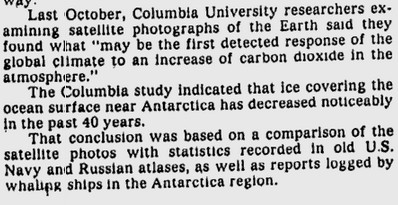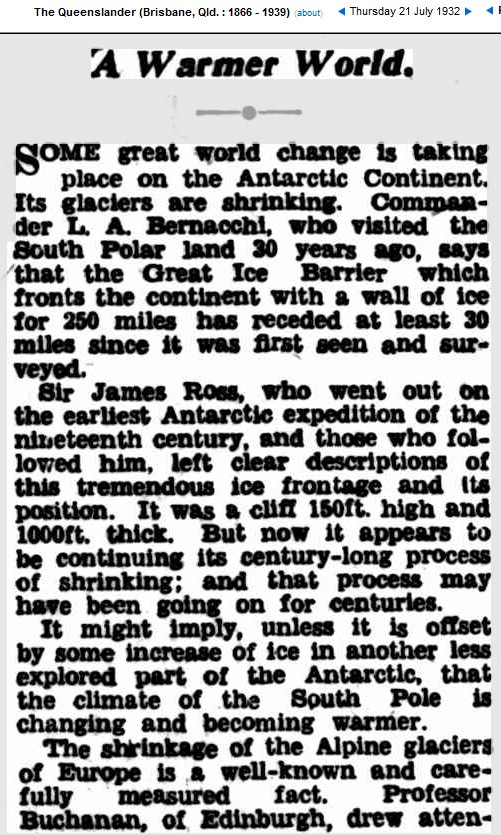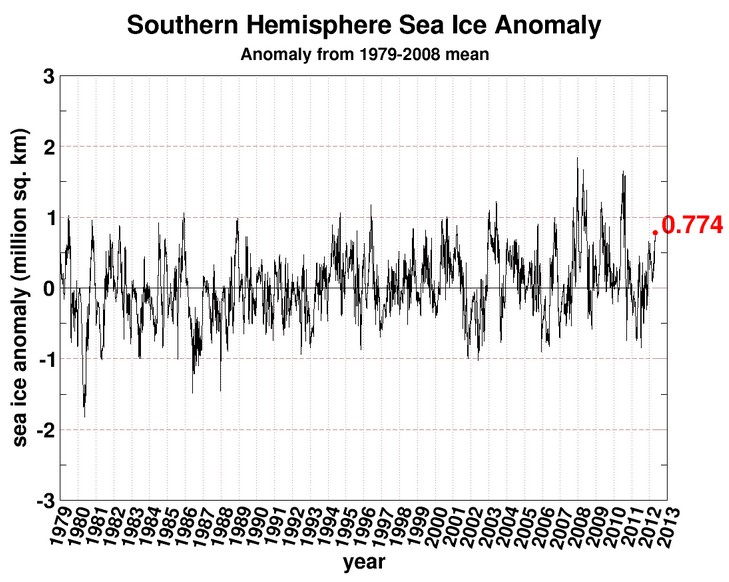No matter what year they start in, many climate scientists appear incapable of examining written records more than forty years in the past.
If these Columbia posers were actual scientists, they would have known that Antarctic ice shelves had been rapidly receding since the early 19th century, and that it had nothing to do with CO2.
Not to mention the fact that Antarctic sea ice has actually been increasing since 1979.





That’s due to global warming Steve and the shape of Antartica. Well that’s what BAS says. Don’t shoot the messenger.
Arctic extent has taken a dive, all that ice at the edge was very thin of course as it was only put on at the last part of winter.
Andy
Good to see you back AndyW:
I enjoy the comedy you provide!
Do you think variable wind and ocean currents might have something to do with ice conditions in an ocean ocean around a large continent.
Actually that is due to VERY long term weather patters that both warm and cool. But then those patterns have only existed for millions of years. If not longer.
Antarctica has been loosing mass balance (MB). However, it’s not so straightforward to tie mass balance loss to AGW theory. What AGW theory as per AR4 claims is that Antarctica should be gaining surface mass balance (SMB) due to increases in atmospheric humidity. That hasn’t happened either.
So the theory is wrong, but because there is MB loss regardless, AGW proponents declare they have hit a home run. “Antarctica is loosing land surface ice, so global warming is real!” Hold on boys and girls, the climate models tell us that Antarctica should be *gaining* ice mass due to the very low temperatures there, circumpolar current, etc., combined with increased atmospheric humidity levels… So you ask, how can your theory be right if the empirical observations show the opposite of your models? The standard reply: “Because it’s worse than we thought!”
Ah well, that explains everything…
That explains everything! Certainly, Most certainly, for positive and sure it does! 🙂 🙂